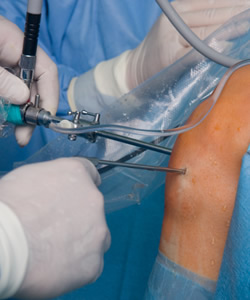Arthroscopic Knee Surgery
According to the American Orthopaedic Society for Sports Medicine, more than 4 million knee arthroscopies are performed worldwide each year.
Knee arthroscopic surgery is a procedure performed through small incisions in the skin to repair injuries to tissues such as ligaments, cartilage, or bone within the knee joint area. The surgery is conducted with the aid of an arthroscope, which is a very small instrument guided by a lighted scope attached to a television monitor.
The advantage of arthroscopy over traditional open surgery is that the joint does not have to be opened up fully. Instead, for knee arthroscopy, only two small incisions are made, one for the arthroscope and one for the surgical instruments to be used in the knee cavity. This reduces recovery time and may increase the rate of surgical success due to less trauma to the connective tissue.
The range of knee arthroscopic surgeries represents very different procedures, risks, and aftercare requirements. Common injuries for which knee arthroscopy is considered include:
- Cartilage tears (meniscus tears)
- Loose bodies in the knee
- Ligament strains and tears
- Cartilage deterioration underneath the kneecap (chondromalacia patella)
- Patellar imbalance disorders
- Articular (joint surface) cartilage lesions
While the clear advantages of arthroscopic surgery include less anesthetic, tiny incisions, and less recovery time, this surgery nonetheless requires a thorough examination of the causes of knee injury or pain prior to a decision for surgery.
